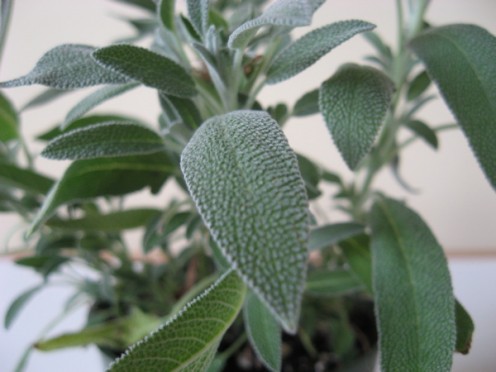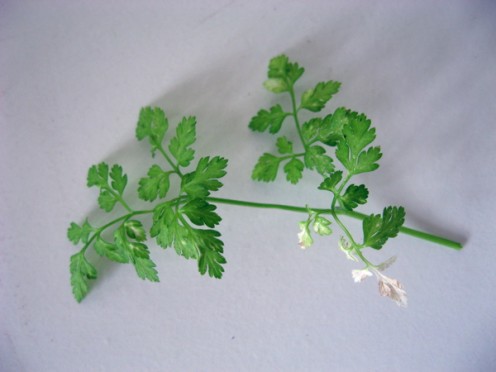Starting a Culinary Herb Garden At Home

Starting a culinary herb garden, whether indoors on a windowsill or outside in a garden, offers up chance after chance for wild experimentation.
When you cultivate your own mix of fresh herbs, you'll be unconstrained by the varieties usually sold in a supermarket. The only limits are your time, patience and gardening skill. So why not maximize for variety and novelty in your herb garden? Try growing unusual varieties of standard herbs.
Try out herbs that would be hard to buy fresh where you live. If you plan to grow mint, for instance, try apple mint or chocolate mint. Like basil? Try lemon basil.
Stumped for what to plant? Here are six culinary herbs I've tried growing this year.

SAGE
Sage has large, long, fuzzy-looking, frosty green leaves. Fresh sage has so much more flavor than dried sage. The flowers are a pretty purple shade, and they're edible, too.
- Growing notes: When this plant gets thirsty, the leaves droop noticeably. It likes its water regularly every day.
- Culinary uses: Try it in soups with squash.
- Also consider: Purple sage.

CHERVIL
Chervil tastes a little like parsley, but it's milder. The leaves are very delicate and fern-like, so it makes a pretty garnish.
- Growing notes: The leaves on this plant turn whitish easily.
- Culinary uses: It's often called for in French cooking.
- Also consider: Flat leaf parsley.

CHIVES
Garlic chives, with their bright green stocks and deep black tips, are a pretty addition to salads or sandwiches. They have a very strong flavor.
- Growing notes: Chives come out of the ground doubled over, with the tips facing the ground, and it's impressive to watch the stalks unfurl. Once they get going, chives need very little attention and grow quickly.
- Culinary uses: Chives are a classic topping for baked potatoes.
- Also consider: Green onions.

DILL
Frilly dill sprigs make a pretty garnish on a variety of dishes. The taste of dill always reminds me of pickles and picnics.
- Growing notes: Dill sprouts from seeds fairly easily.
- Culinary uses: Mix dill into potato salad or sprinkle over asparagus.
- Also consider: Fennel. The leaves have a similar look.

TARRAGON
Tarragon has a slightly sweet taste with hints of fennel. It's not spicy at all.
- Growing notes: While I love tarragon, I've been underwhelmed with the variety I'm growing.
- Culinary uses: Chop and add to salads and salad dressings.
- Also consider: Lemon thyme, which is good in salad dressings, too.

SUMMER SAVORY
This herb tastes and looks a lot like thyme, but it's possibly a little spicier. The leaves are more elongated and pointed.
- Growing notes: Without a label, I'd have a hard time separating summer savory from an alternate kind of thyme.
- Culinary uses: Soups, stews and salad dressings.
- Also consider: Winter savory.

Which of these is the most useful culinary herb to grow at home?
READ MORE BY E. A. WRIGHT
- The One Window Herb Garden
Even if only one window in your house or apartment gets good light, it's possible to start an herb garden and find satisfaction in harvesting pinches and sprigs of your own homegrown herbs. - How to Make a Tomato and Basil Quiche
A tomato and basil quiche is a tasty alternative to pizza or pasta. The filling is easy to assemble, and the homemade pie crust just tastes good. The dish works well for brunch or a for summer picnic. - Death Valley Flowers: Spring Wildflowers in a Desolate Land
Death Valley National Park is a striking place, a place with extremes in topography and temperature. And some years, if the conditions are just right, the park erupts with a wild show of wildflowers. - Sweet Smelling Flowers: 7 Kinds of Fragrant Flowers
A guide to fragrant, sweet-smelling flowers: From lilacs to freesias, these flowers are treat for the nose. - How To Make Kiwi Lime Sorbet
Kiwi fruit makes an unusual, but tasty, sorbet ingredient. This sorbet recipe combines ripe kiwi fruit and fresh lime juice into a unique, homemade frozen dessert.








